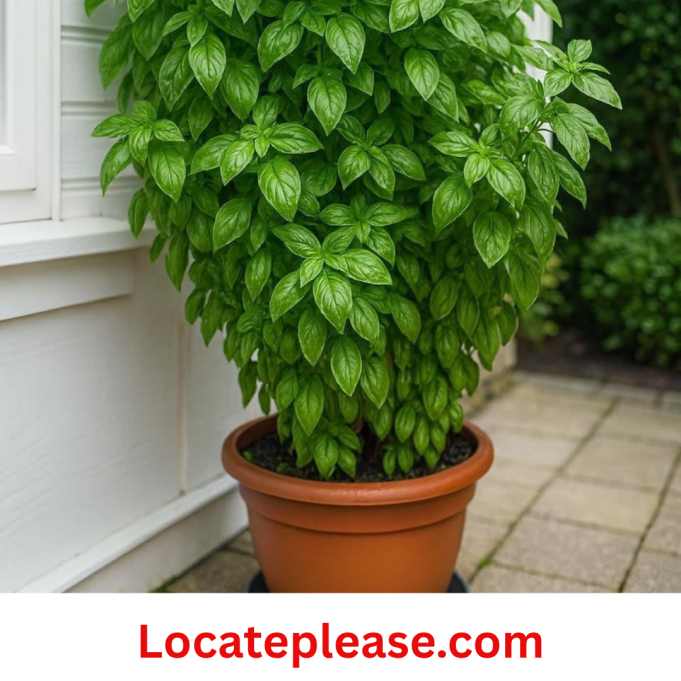If you’ve ever bought a pot of basil from the grocery store—only to watch it wither and die within days—you’re not alone. Basil is one of the most beloved herbs in the world, treasured for its sweet aroma, vibrant flavor, and lush green leaves. But too often, we treat it like a disposable garnish rather than the resilient, long-lived plant it can become.
Here’s the truth:
Basil doesn’t have to be short-lived.
With the right care, pruning techniques, and a simple propagation trick, your basil can live for years—yes, even over a decade—providing fresh leaves for pesto, pasta, salads, and more, season after season.
Ready to grow lush, thriving basil that lasts a lifetime? Let’s dig in!
🌿 Choosing the Right Basil Variety
Not all basil is created equal. For longevity and continuous harvest, choose varieties known for vigor and flavor:
- Genovese Basil – The gold standard for pesto, with large, fragrant leaves and excellent regrowth after pruning.
- Sweet Basil – Classic, tender, and perfect for beginners.
- Thai Basil – Adds spicy, anise-like notes to stir-fries and curries; slightly more heat-tolerant.
- Lemon Basil – Citrusy and refreshing, ideal for teas, fish dishes, and cocktails.
👉 Pro Tip: Genovese and Sweet Basil are best for long-term growth when regularly pruned.
☀️ Basil’s Ideal Growing Conditions
Basil is a sun-worshipper. To thrive, it needs warmth, light, and a little humidity.
- Sunlight: At least 6–8 hours of direct sunlight daily (south-facing windows or sunny patios are ideal).
- Temperature: Prefers 70–85°F (21–29°C). Frost kills it instantly—bring indoors before cold weather hits.
- Humidity: Likes moist air. Indoors? Use a pebble tray or humidifier to prevent leaf curl.
Whether in your garden, balcony, or kitchen window, give your basil what it craves: heat and light.
🌱 Preparing the Perfect Soil
Basil isn’t fussy—but it hates wet feet.
- Soil Type: Light, well-draining soil (loamy or sandy mixes work well).
- pH Level: Slightly acidic to neutral (6.0–7.5).
- Amendments: Mix in compost, perlite, or coconut coir for nutrients and drainage.
❌ Avoid heavy clay soils—they retain water and cause root rot.
🔁 Starting Basil: Seeds vs. Cuttings (The Secret to Immortality)
You can start basil from seeds…
But if you want a never-ending supply, use cuttings.
✅ From Seeds:
- Start indoors 4–6 weeks before last frost.
- Plant seeds ¼ inch deep, keep warm and moist.
- Germinates in 5–10 days.
✅ From Cuttings (The Lifelong Method):
- Snip a healthy stem (4–6 inches), remove lower leaves.
- Place in a jar of water on a sunny windowsill.
- Roots appear in 5–7 days.
- Once roots are 2 inches long, transplant into soil.
💡 This is how gardeners keep basil alive for decades: by continuously propagating new plants from old ones.
💧 Watering Like a Pro
Overwatering is the #1 killer of basil.
- Water deeply when the top inch of soil feels dry.
- Morning watering reduces fungal risk.
- Signs to Watch For:
- Drooping leaves = thirsty
- Yellow leaves = overwatered
✅ Stick your finger in the soil—it’s the best moisture meter.
🌱 Fertilizing for Longevity
Feed lightly and naturally.
- Every 3–4 weeks, add a handful of organic compost.
- Or use liquid fish emulsion or seaweed extract every few weeks.
- ❌ Avoid high-nitrogen fertilizers—they promote weak, leggy growth with poor flavor.
✂️ Pruning: The Real Secret to Bushy, Ever-Growing Basil
This is the most important step for a plant that keeps giving.
- Start early: When your plant has 6–8 leaves, snip off the top set just above a leaf node.
- Pinch regularly: Every 1–2 weeks during growing season.
- Always cut above a pair of leaves—this signals the plant to grow two new branches from that point.
🔁 More pruning = more stems = exponentially more basil.
🌿 Think of it as “haircuts” for your herb—regular trims make it fuller and stronger.
🌼 Preventing Bolting & Flowering
When basil flowers, it stops growing leaves and prepares to die.
- Cut off flower buds immediately when you see them.
- Why it matters: Flowering shifts energy from leaf production to seed.
- Don’t wait—even one bloom can trigger decline.
👉 Tip: Harvest frequently to delay flowering and prolong life.
🐛 Pest & Disease Control
Keep your basil strong and bug-free.
Common pests:
- Aphids
- Whiteflies
- Spider mites
Natural remedies:
- Spray with neem oil or insecticidal soap
- Use homemade garlic or chili spray
- Grow companion plants like marigolds, chives, or garlic to repel insects
Avoid overhead watering to prevent fungal diseases like downy mildew.
✂️ Harvesting Without Killing the Plant
Want endless basil? Harvest the smart way.
- Always cut from the top, never the bottom.
- Never remove more than ⅓ of the plant at once.
- Use clean scissors or pinch with fingers to avoid crushing stems.
- Harvest weekly to encourage bushiness.
👉 Rule of thumb: The more you pick, the more it grows.
🔁 Propagating Basil for a Lifetime Supply
This is the gardener’s secret to immortal basil.
- Snip a healthy stem (4–6 inches).
- Remove lower leaves.
- Place in water in a sunny spot.
- Wait 5–7 days for roots to form.
- Pot up and grow!
By rotating cuttings every few months, you create a continuous cycle of young, vigorous plants—no need to buy seeds again.
🏆 One original plant can spawn generations of basil—lasting 10+ years.
🏡 Growing Basil Indoors All Year
Winter doesn’t have to mean goodbye to fresh basil.
- Use full-spectrum LED grow lights (12–16 hours/day).
- Place near a south-facing window for natural light.
- Keep warm (above 65°F) and use a humidity tray.
- Rotate pots weekly for even growth.
🌱 Fresh basil on your pizza in January? Absolutely.
🌾 Saving Seeds for the Future
For self-sufficiency:
- Let one plant flower and go to seed.
- Collect tiny black seeds from dried flower heads.
- Store in a labeled envelope in a cool, dry place.
✅ Properly stored seeds remain viable for 3–5 years.
✅ Conclusion: Basil Is a Lifestyle, Not Just a Herb
Growing lush, long-lasting basil isn’t magic—it’s method. With smart pruning, regular propagation, and indoor care, your basil doesn’t have to die each year. It can become a living heirloom, passed from cutting to cutting, generation to generation.
It’s not just about flavor.
It’s about connection—to nature, to food, to the rhythm of growth and renewal.
So stop replacing dead basil.
Start renewing it.
Because with this one simple trick, your kitchen herb can truly last a lifetime.
🌿 Happy growing!
❓ FAQs
1. How long does basil really live?
Most basil is an annual, but with indoor care and propagation, it can be maintained for many years—even over a decade.
2. Can basil survive winter?
Outdoors in cold climates? No. Indoors with light and warmth? Yes—with proper care.
3. What’s the key to bushy basil?
Frequent pruning—especially topping the main stem early and often.
4. Why is my basil getting leggy?
Likely due to low light or lack of pruning. Move to a sunnier spot and pinch back regularly.
5. Pots vs. ground: which is better?
Both work! Pots offer control and mobility; in-ground lets plants grow larger with deep roots.
Basil doesn’t shout. It grows quietly on the windowsill, green and inviting, saying everything a great herb should: “Pick me. Plant me. Pass me on.”
That’s how the best ones begin—not with silence, but with care, continuity, and someone who says, “Let’s grow it together.”










